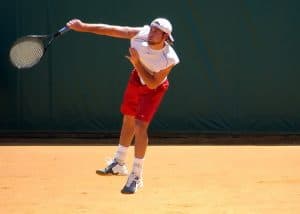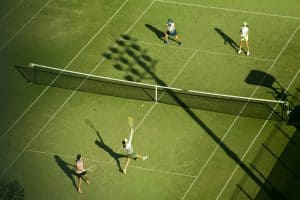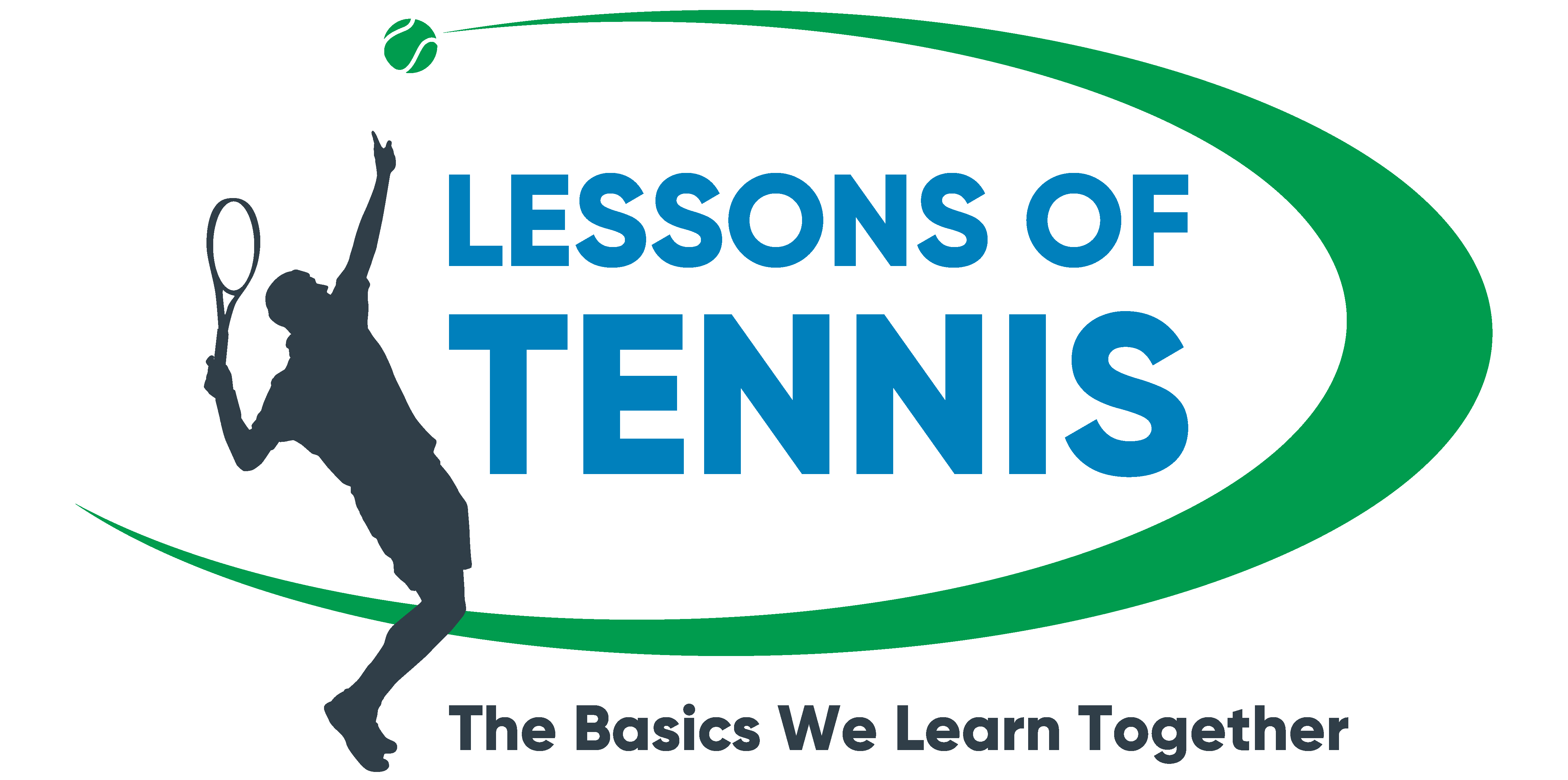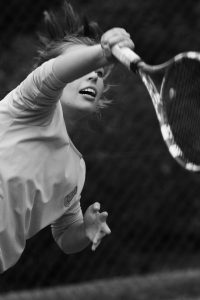An overhead in tennis is a shot hit over your head, on your forehand side, using a serve-like motion. A good overhead shot consists of footwork, court position, the stroke, and post shot recovery. It is unique to the other tennis shots in that is is the only one after the serve designed specifically to gain complete control of the point or produce a winner. Anything less than this shouldn’t happen with a well executed overhead. The overhead is sometimes called a smash or an overhead smash, but this falsely indicated the approach needed for an overhead. How to hit a tennis overhead includes the technique as well as knowing when to hit one.
The Steps To Hitting A Tennis Overhead

Eyes Always On the Ball
Always track the ball with your eyes. Your eyes see whats happening and through complex scientific stuff transfers that information to your brain to decide where the ball is going. When you lose sight of the ball the information chain breaks, and it takes time to re-track the ball and reestablish that information. Use your eyesight to identify where the ball is headed and go there, using good footwork.
Footwork
Great footwork will give you the time and balance to make a great overhead. A tennis overhead usually comes about by a lob shot from your opponent. This almost always gives you more time to prepare for this shot than any other shot in tennis. FUN!! This is a great opportunity to use great footwork. To move to the ball, push off with the foot away from the direction you are headed.
You do NOT want to begin by crossing your feet. As you move to the ball, shuffle your feet and try not to cross them. This is limited to how far you need to get in a short amount of time, but the more you limit crossing your feet the better.
Position your feet so your body is pointed where you want the ball to go. Your back foot should be parallel to the net and your front foot pointed about 45 degrees to the forehand side. Stay on the balls of your feet and do a slight hop forward (keep your body aligned to your target as you start your swing.

Court Position
As you arrive in the spot you want, the ball should be on your forehand side and you should have it tracked to arrive at your racket contact about a foot to the forehand side and about a 2 or 3 feet in front of you.
The Overhead Grip
Use the continental grip for your overhead. This will give you control and an ability to put a little topspin on the ball.
Arms Up In The Air
As soon as you track the ball and know where the ball is headed get your arms up. If you have a longer way to go, don’t quite get your arms in the ready position above your head; that would limit your mobility. Instead, bring your arms up to your shoulder level while running to your spot. As you approach your spot, raise your racket arm behind your head, with the racket parallel to the ground. The racket itself will be perpendicular to the line between yourself and the ball.
Track the Ball With Your Off Hand
As you raise your racket also use your non-dominant hand to point directly at the ball. This will help you track the ball in the air. Keep pointing directly at the ball until you begin the stroke. Your shoulders should be lined up as if they are pointing at your target.
The Overhead Stroke
The tennis overhead stroke is remarkably similar to a second serve. A controlled, consistent stroke will produce the best results. As the ball comes down, reach up and forward with your racket to meet the ball about one foot in front of your body. A light topspin will give you the best chance to get the ball in. Follow through your stroke, with your racket ending near your non-dominant hip in front of your body.

Where To Aim Your Overhead
You want to aim your overhead to where your opponent is not standing. Your goal is to make them move. It is always more difficult to return a shot, especially an overhead, while on the move. This is the most effective way to set up for your next shot. The opponent will naturally hit the ball back near the center of the court, but this time they are way out of position to return your shot. Now you are set up for a winner, one shot after your overhead.
Recovery After Your Overhead
After your overhead, if you are near the baseline, move quickly to the net and do a split step before the next ball is hit. You are in an ideal position to have a put away volley or second overhead. Take advantage and hit your winner here.
Should I Let the Ball Bounce For An Overhead?
Usually an overhead should be hit in the air. Do this to maximize your angle opportunities for your shot. It will also limit the opponents decision making time.
There are rare times, however, where it makes sense to let the ball bounce first. One of them is if the lob was extremely high, you should hit it after the bounce. A high lob means the ball will fall more vertically, and that is sometimes difficult to hit in the air. A bounce will produce a more user friendly ball trajectory. It will be easier to track with your eye, and there will be more room for error on timing.
Am I Telegraphing My Overhead?
A little telegraphing with your alignment while in ready position is okay. An overhead isn’t supposed to be a powerful smash winner every time. An overhead is meant to gain complete control of the point and only should be a winner in an obvious open court situation. If done properly, the minimum you can get out of a successful overhead will be control, regardless if the opponent knows where you’re hitting it. Even if they know the coming shot location, they’re only choices are to punch it back or lob it back. What you do with that control and this opportunity will decide weather or not you win the point.
A Consistent Overhead Is A Tennis Must
The important thing to remember when learning how to hit an overhead in tennis is consistency is key. The shot should reliably put you in control of the point. It is not meant to necessarily win you the point at that moment, but to give you the best chance to win in the next shot or two. Hit it like a second serve, one you know you must get in to win. If you treat it like a first serve and try to smash the ball, you’ll be on the losing end more often than not. The overhead is not practiced as often as a serve (it shouldn’t be), so you won’t be nearly as good with it. Learning how to hit a solid, consistent, second serve style overhead will give you the results you need to succeed.

